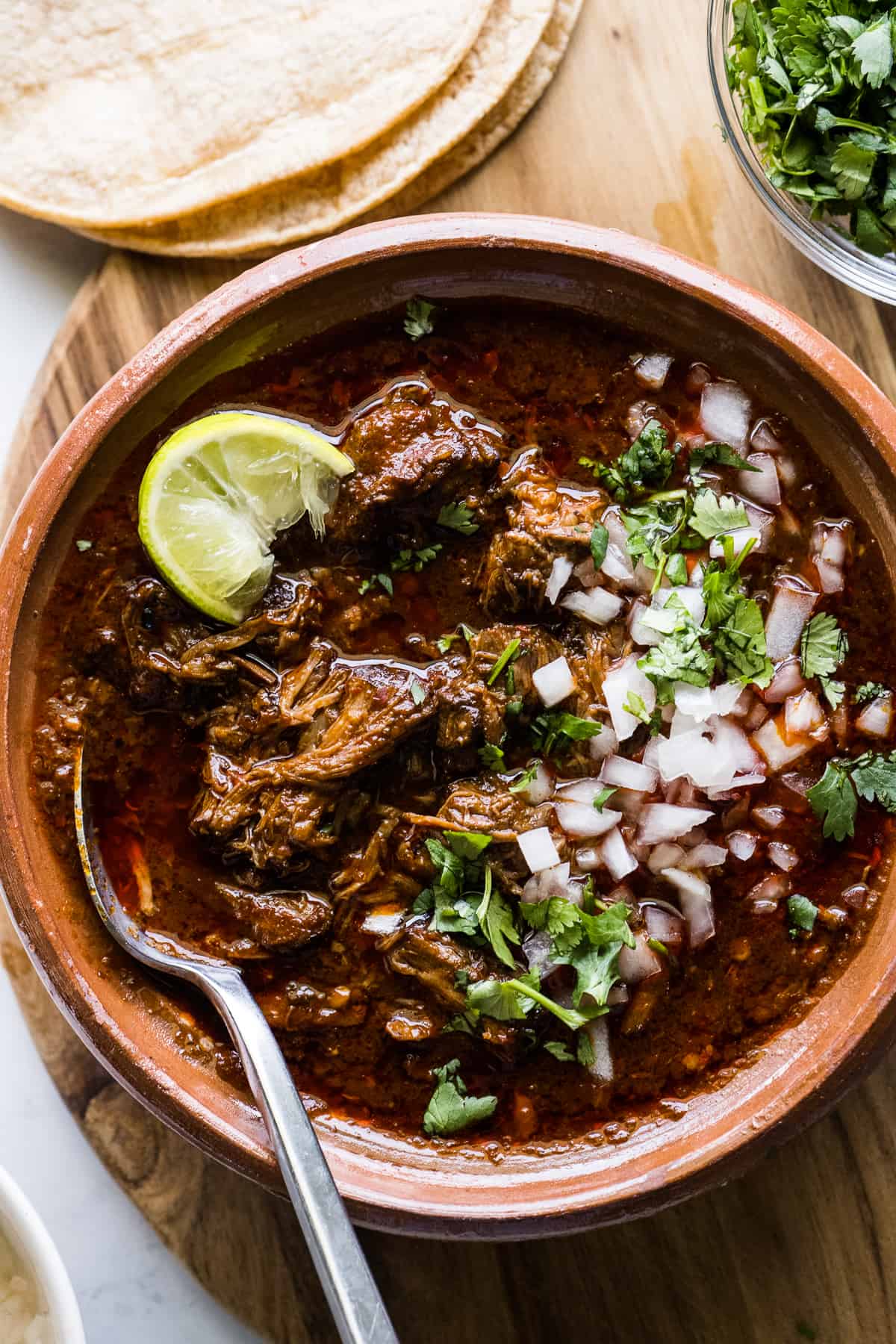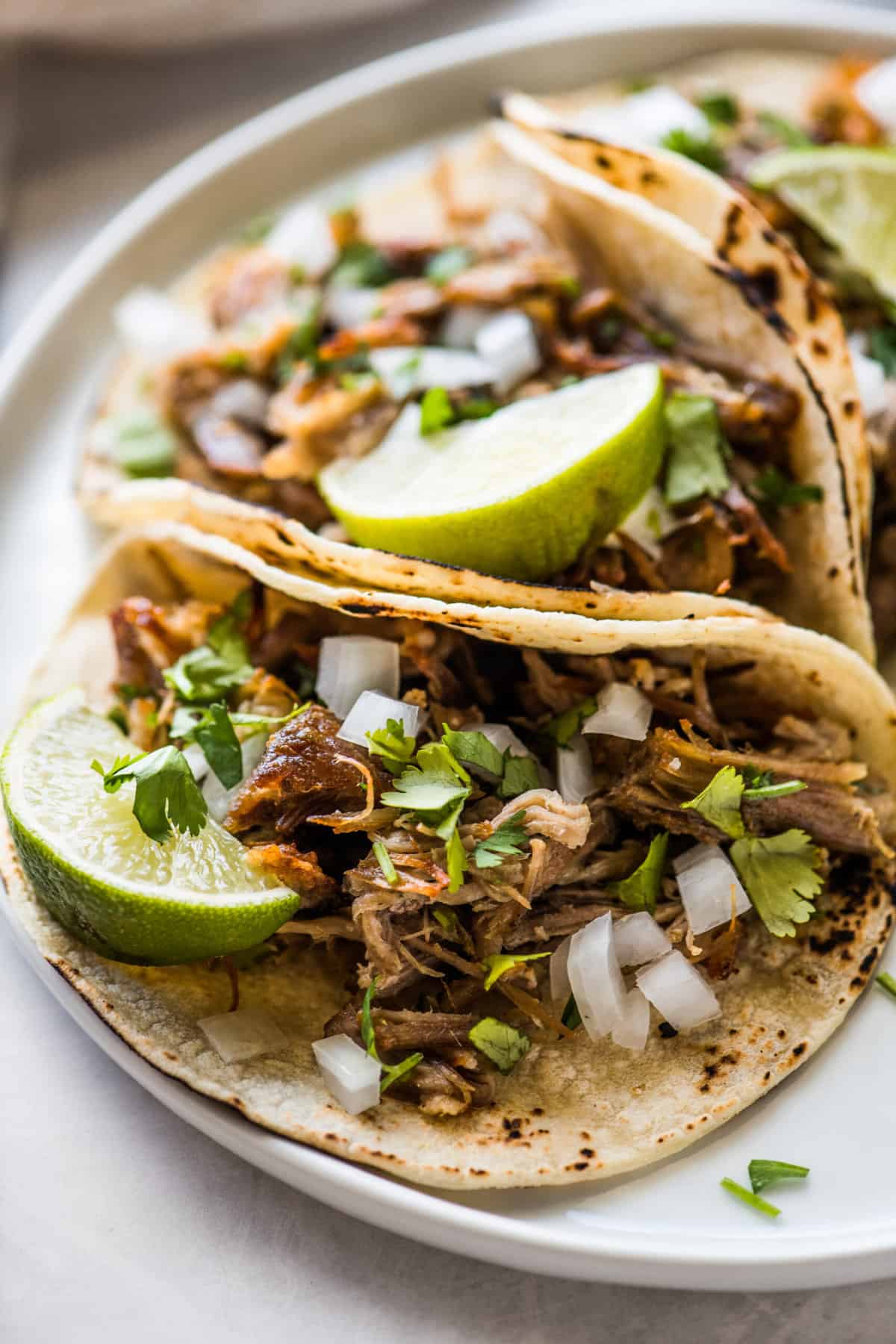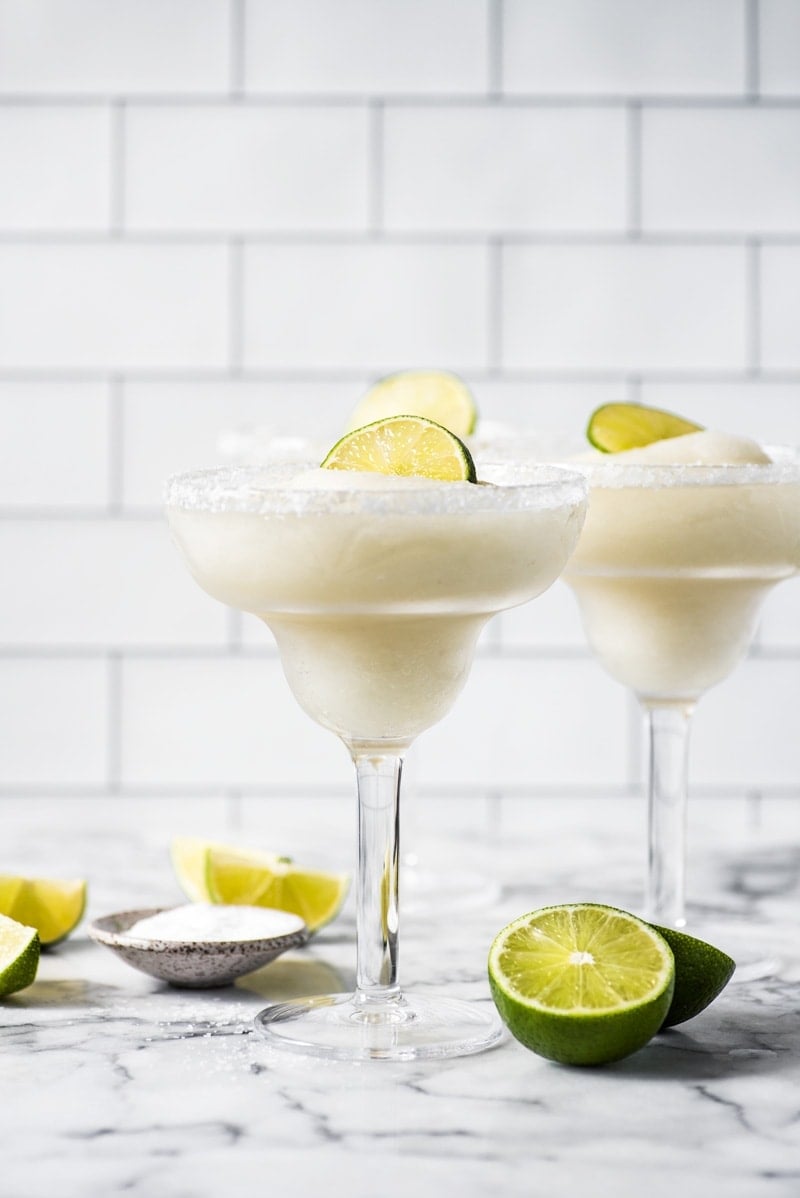If you’ve never tried Mexican chocolate, you are in for a treat! This unique chocolate features bold flavors and rustic textures that you just can’t get in any other type of chocolate. Learn more about what makes it different than regular chocolate and how it’s used in Mexican cuisine!

What is Mexican chocolate?
Mexican chocolate is a paste made from cacao nibs, sugar and cinnamon. Its texture is very grainy compared to normal baking or milk chocolate due to the high sugar content. Very often, other flavors are mixed in to create an even more complex flavor. Common additions you will find are:
- Vanilla
- Chiles
- Nutmeg
- Almonds
Cacao originated in Mexico and can be found growing all over the country. The beans grow on trees in tropical climates, and once they’re dried they’re fermented before being used for many different purposes.
When dried cacao (cocoa) beans are cracked open, small pieces are produced, which are known as cacao nibs. To make Mexican chocolate, the nibs are ground and roasted. They have a bitter taste, which gives the chocolate its distinctive flavor.
When you shop for Mexican chocolate in the United States, look for it to be sold in solid discs (like in the photos shown in this post). Liquid seasoned cacao is poured into molds and allowed to cool, and is then sold is solid form.
My favorite brand is Abuelita, which can be found in grocery stores and ethnic markets. Sometimes you will also find it sold as a syrup or powder.

What’s different about Mexican chocolate?
Not only does Mexican chocolate have a rougher texture and bitter flavor, but it also serves a completely different purpose. There are popular dessert recipes that use Mexican chocolate, but more often it is used as a food, not as a candy.
While you might nibble on a piece of traditional chocolate as a dessert, the Mexican variety is not intended to be eaten by itself. Rather, it is a compliment to other ingredients, often used to enhance the flavor.
Compared to milk or semi-sweet chocolate, Mexican chocolate is minimally processed. It still retains much of its rustic flavor and texture, and the bitter cacao bean flavor is easy to taste.
As a result, it is not necessary to add any other ingredients to it. Things like cocoa butter, which creates a smooth texture in many varieties of chocolate, aren’t necessary.

What can I use as a substitute?
The chocolate you typically find on U.S. store shelves is not a good substitute for Mexican chocolate. This is because the flavor profile of American-made chocolate is much different.
If you can’t find authentic Mexican chocolate, combine these ingredients:
- Semi-sweet chocolate or cocoa powder
- Cinnamon
- Almond extract
- Vanilla extract (optional, but recommended)
The chocolate compliments warm spices, so feel free to experiment and make your own unique flavors!
Recipes using Mexican chocolate
In the U.S., you will often see it in recipes for Mexican hot chocolate. Many store brands have instructions written on the side of the box. You may even find it called “drinking chocolate.”
It is important to remember that the sugar content between the two chocolates is very different. As a result, if you want to substitute one variety for the other, the amount of sugar called for in the recipe will need to be adjusted.
An easy way to use it in baked goods is to chop it in a food processor. In that form, you can use it in cake batter, icing and frosting, or even as a garnish.
That being said, don’t overlook its versatility! In addition to being great in desserts, my family also used it in many savory Mexican dishes. Here are a few examples of recipes that use Mexican chocolate:
- Mole sauce
- Red Posole
- Beef or pork chili (pairing it with chiles is a delicious combination)
- Sweet Tamales, which often pair the chocolate with fruit
- Authentic Enchilada sauce
- Mexican Chocolate Pumpkin Seed Granola
If you have a chance to cook with it, please don’t pass up the opportunity!


























Leave a Reply